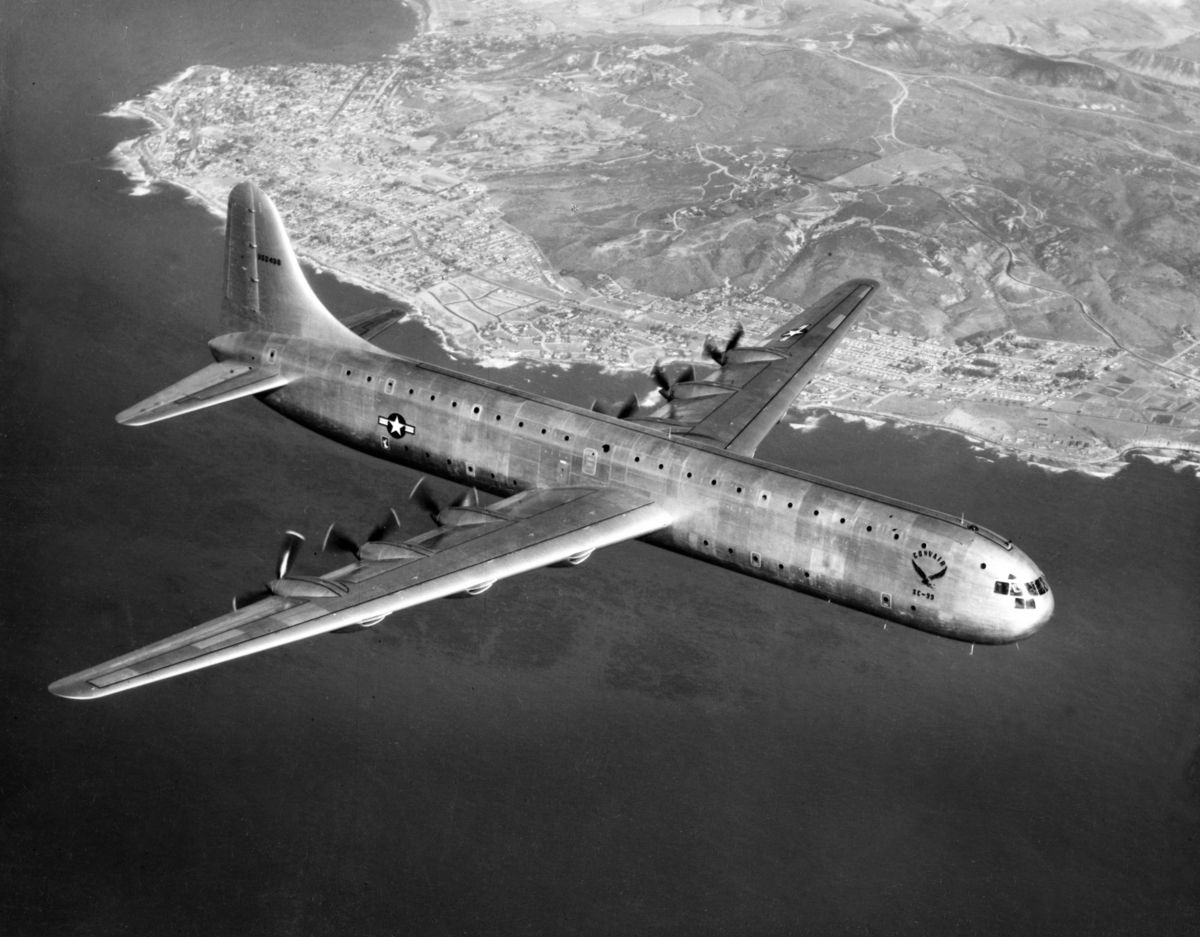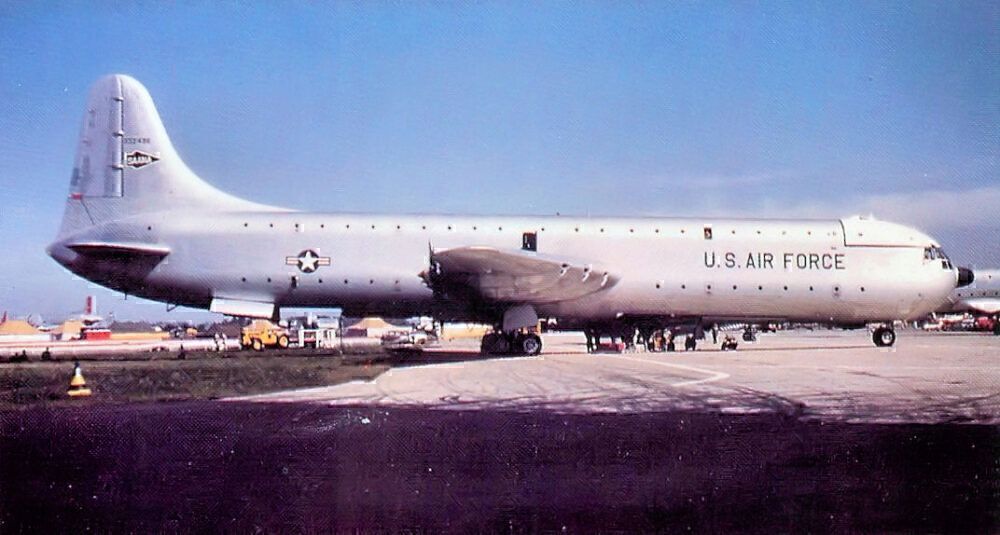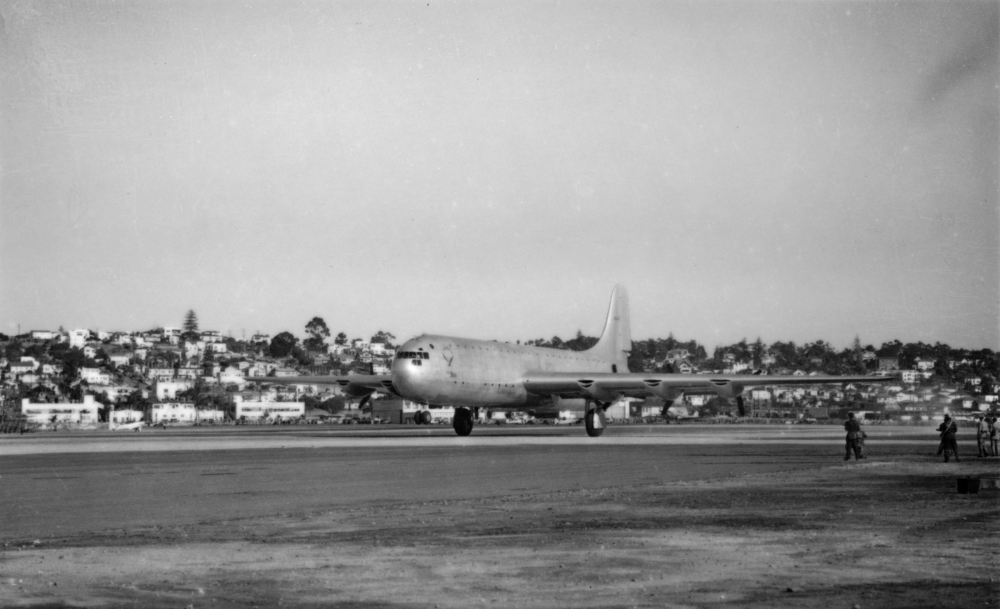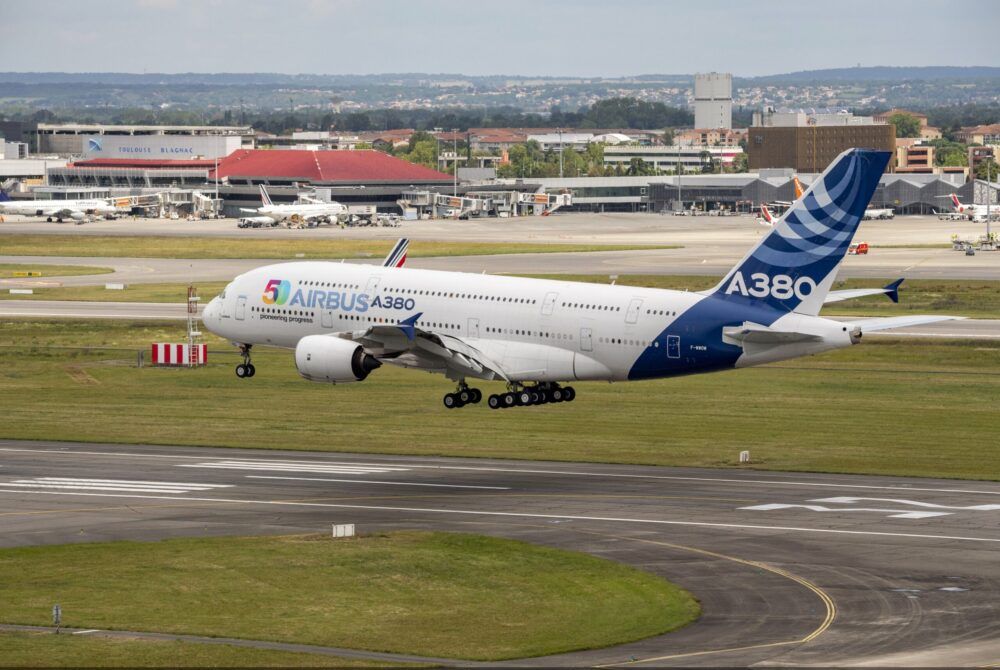The Convair Model 37 was once imagined as the original jumbojet, far surpassing any aircraft in size we have ever seen. Based on the war freighter, the XC-99, this aircraft had the range and capacity to be the first superjumbo. Let's find out more about this massive aircraft that never took to the skies.
The first intercontinental aircraft
The Boeing 747 is largely credited with popularizing long-haul travel, opening routes that previously required multiple stops. However, this wasn't the first time the idea of a jumbojet had been explored. The Model 37 was seen as the first-ever plane that could do non-stop transatlantic services as early as 1950.
The Model 37 would have the same design as the XC-99, featuring six, 3,500hp, radial piston engines. These six engines were mounted on a truly massive airframe, which was 55.6 meters long and had a wingspan of 70m, with two decks.
The predecessor to the Model 37, the military XC-99, had several unique features. The aircraft was based on the Convair B-36 Peacemaker, the highly popular strategic bomber. The XC-99 was a long-haul cargo aircraft that could carry 400 equipped troops or 45,000kgs of freight. The Air Force only chose to order one XC-99, which took its first flight in 1949 and was retired in 1957.
While the military version found limited success, there was hope for a commercial variant. Given the range and capacity of the XC-99, the Model 37 could have been the predecessor to the Boeing 747.
Stay informed: Sign up for our daily aviation news digest.
Stumbling blocks
There was a lot of excitement for the upcoming Model 37, with Pan Am reportedly ordering 15 of the type long before production. The plane could seat 204 passengers over its two decks and had a range of 4,200 miles. This would allow it to make the New York to London journey with just one refueling stop.
One drawback of the XC-99 had been the high cost of its operation, primarily due to the fuel-guzzling six piston engines. Convair proposed swapping out the piston engines for turboprops instead, which are much more efficient. However, the new engines could not come together fast enough, forcing airlines to reconsider operating the planes.
With very few airlines actually placing orders and the high cost of modifying the plane, Convair abandoned the project altogether. While the Model 37 never made it to the skies, how does it compare against our modern jumbojets?
Competing
The Model 37 most directly compares with the Airbus A380, with their similar double deck designs. The A380 is 17m longer, at 72.2 meters, and has a wingspan of 79.75 meters, nearly 10m more than the Model 37. This makes the A380 much longer and wider than the older aircraft, allowing it to seat three times as many passengers (over 550) and accommodate four jet engines.
While the newer aircraft might be larger than the Model 37, the plane has undoubtedly been an inspiration for double-deck designs. Only a decade after the last XC-99 took to the skies, Boeing rolled out the 747 and ushered in a new era of aviation.
What do you think about the Model 37? Let us know in the comments!




